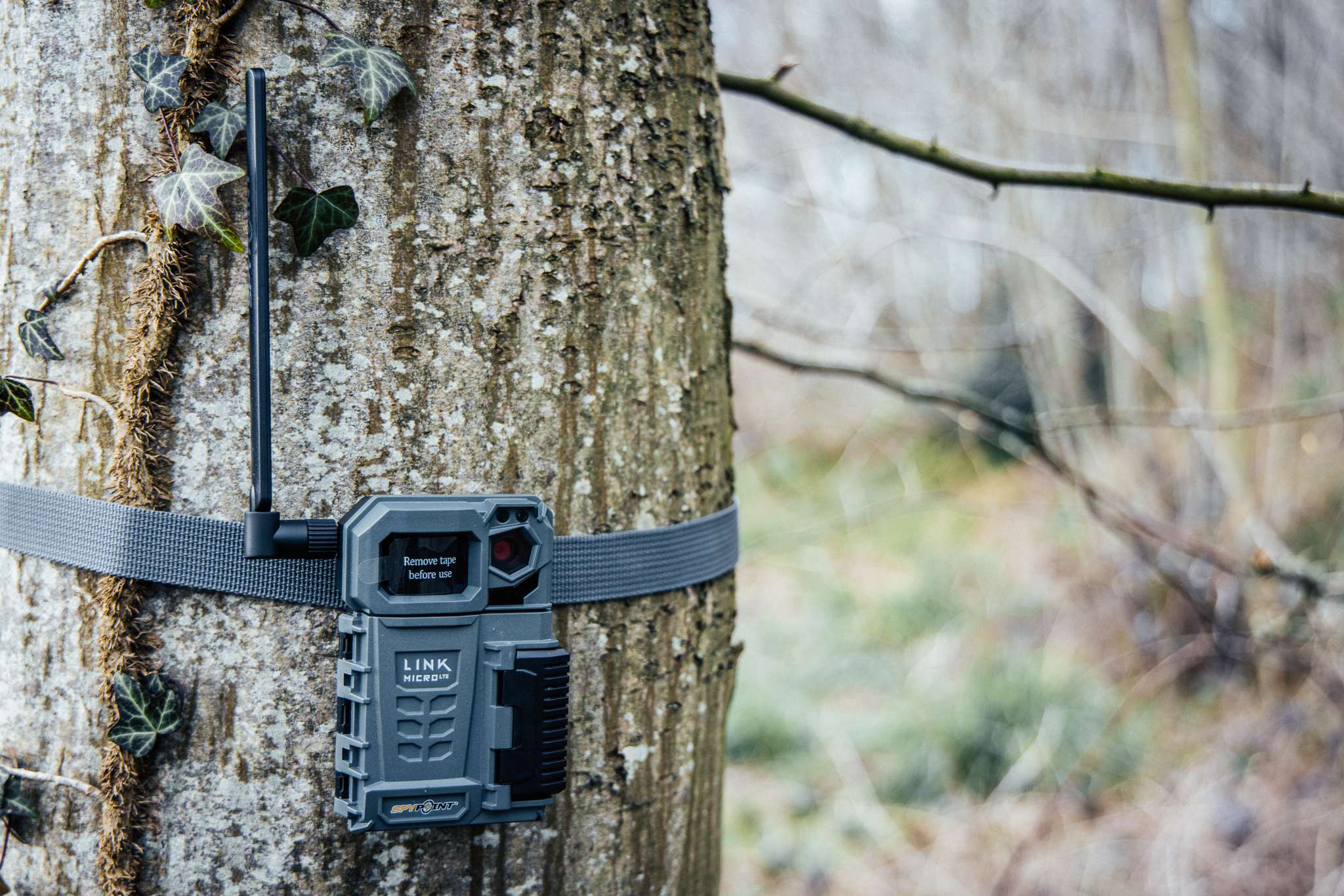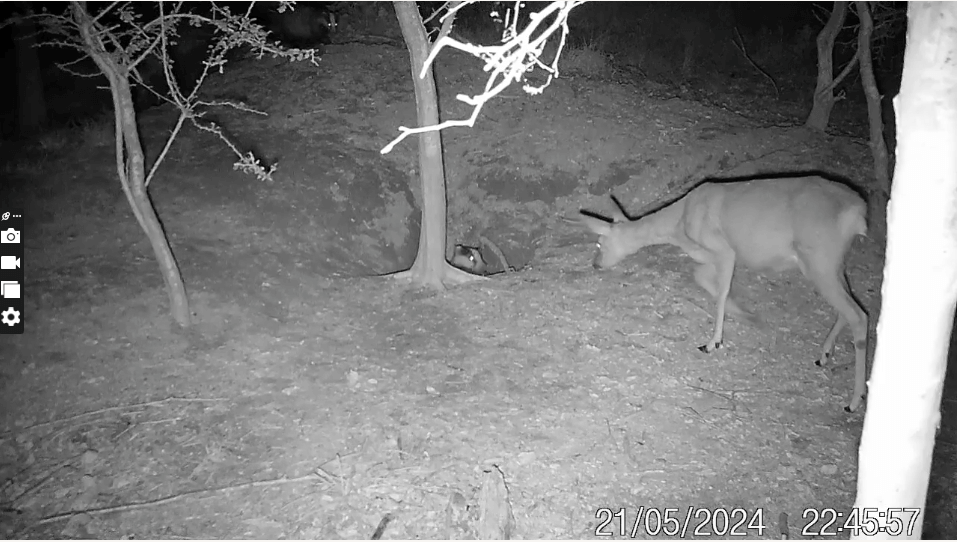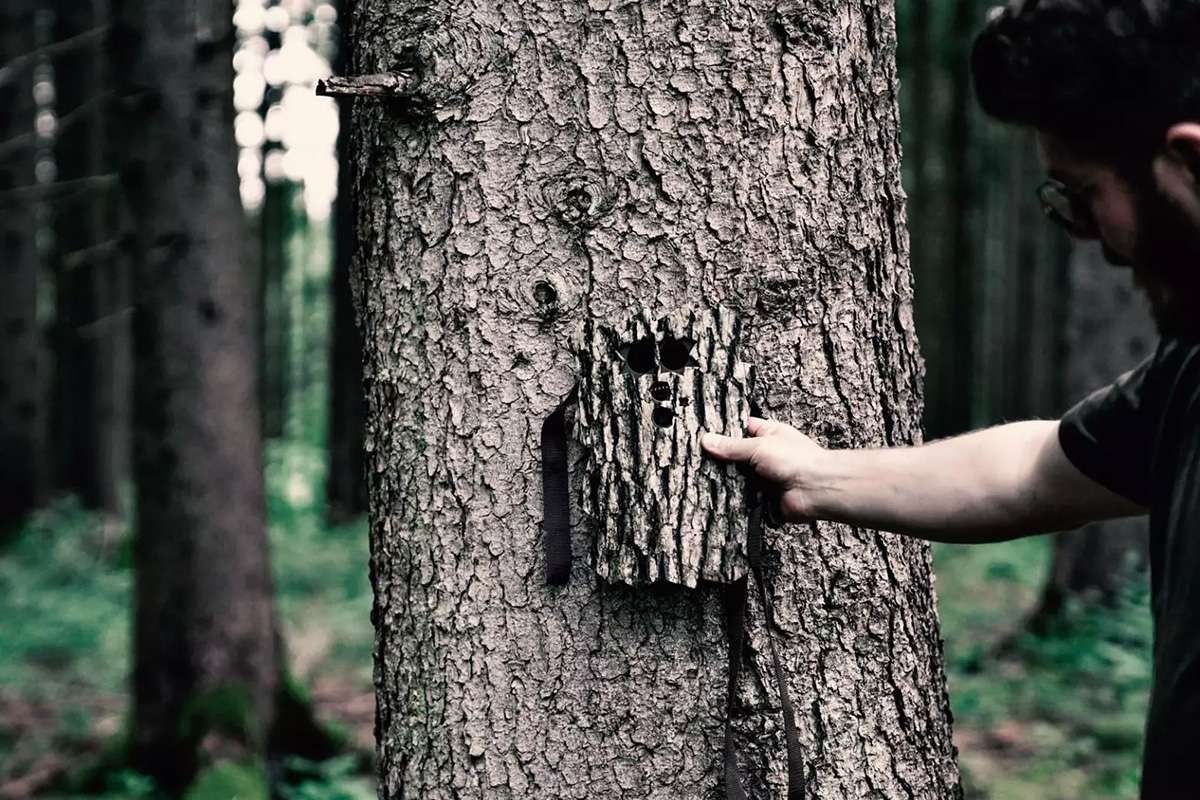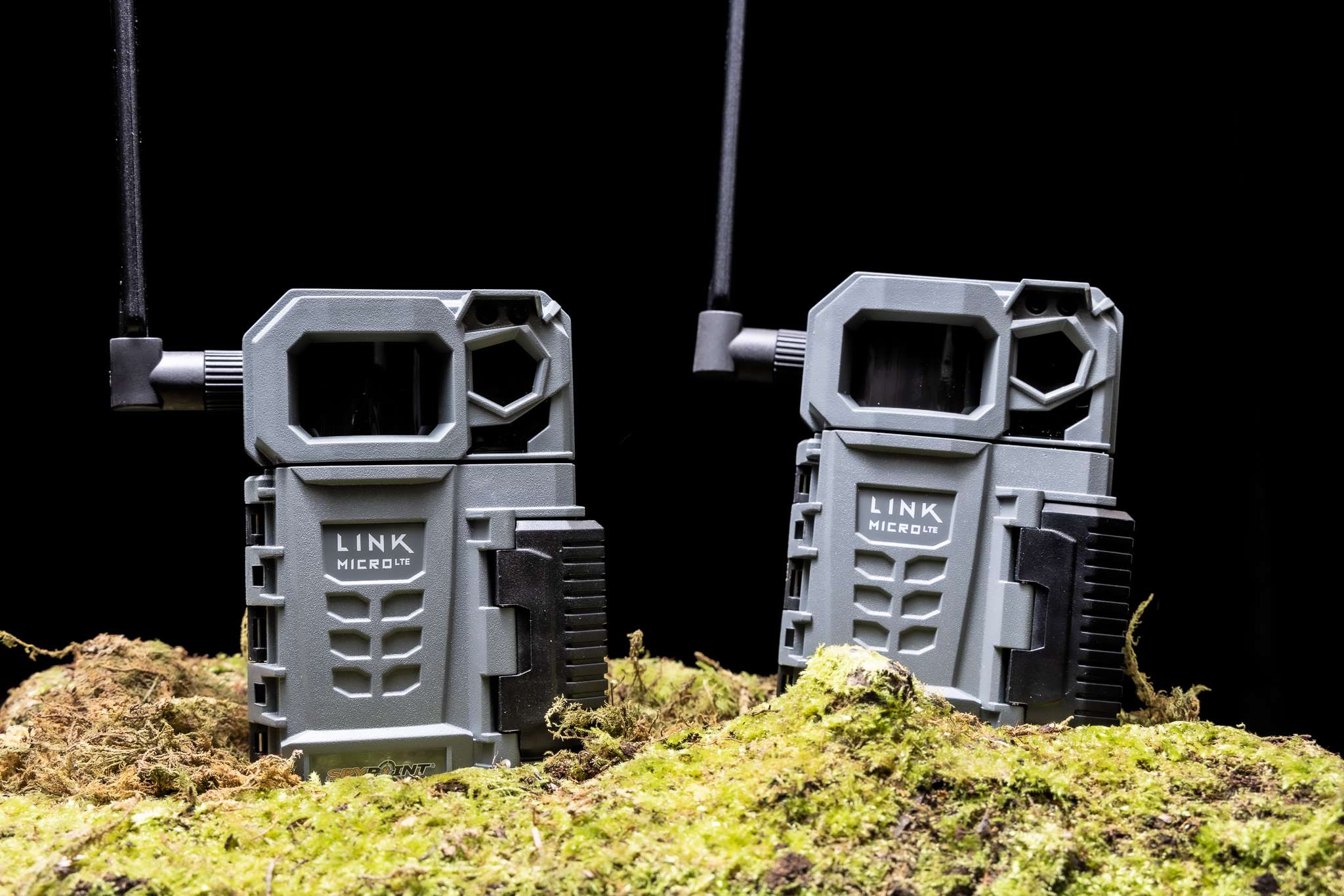Wildlife researchers, ecologists and photographers alike use motion-activated camera traps to determine what species may be present in a given area. Before this technology was widely available, researchers regularly spent long periods in hides, hoping to document what approached. Reducing the workload with camera traps and trail cameras has supported routine observations without the long hours, with some incredible discoveries.
UK conservation research and efforts have used trail cameras to monitor populations such as curlews, pine martens and eagles. In 2024, the Darley Beck Curlew Project used trail cameras together with bio-acoustic monitoring to understand the threat of predators and install exclusion fencing as needed.

Camera trapping studies can support population assessments and biodiversity monitoring and capture rare events, such as this close-up of a white-tailed sea eagle scavenging in North Uist.
In this article, we share the best trail cameras and camera traps for research. We’ll look at a range of factors including budget, range and trigger speed, to help you decide the best for your research.
The right camera trap for your research will depend on many factors, including your budget. For general surveys, you can usually put cost-effectiveness first. For research questions where there are specific species of interest, weather conditions and requirements, check for specific features such as the following.
Detection Range: This is the maximum distance at which the motion sensor will trigger. The longer your detection range, the fewer cameras you need to cover a given area. You may miss elusive animals if they pass outside the detection range, so choose according to the size of your data collection field.
Trigger Speed: This is the time between motion detection and recording, usually a fraction of a second. It is worth checking if you are hoping to observe very fast or small creatures.
Image Quality: Look for high-resolution cameras to record the best images and avoid unidentifiable, blurry objects.
Field of View: Wide-angle lenses may be beneficial, depending on the terrain.
Night Vision: All the trail cameras recommended below use night vision to capture images of nocturnal animals without disruption. Choose a camera with a high-resolution CMOS sensor and a no-glow or low-glow infrared flash (invisible light).
Video Capabilities: Many camera traps take a series of photographs when triggered. However, newer models can record video, for 10s, 20s or even 60s, creating a more reliable record of animal behaviour. The number of photographs and the length of videos can be adjusted in the settings.
Battery Life & Power Options: Long-term studies require durable, long-lasting camera traps, or regular returns to change batteries. Where you have land ownership, it is feasible to choose options that run on mains power, similar to wired security cameras.
Weather Resistance: Durability in harsh environments (rain, snow, heat) is important to avoid corruption and data loss. Most camera enclosures are IP67 waterproof and dustproof, but it is worth checking the model to make sure you choose a suitable model for the specific environment.
Data Storage & Connectivity: Ability to store images/videos and send real-time updates. Choose whether you will return to collect the data or receive it via wifi or 5G network. Real-time data transfer allows you to react to interesting images and gather further data. For wildlife research in remote areas, you may need to choose a camera with a cellular SIM card.
Key Features

Pros and Cons
Long, infrared flash range of ~30m extends night vision, which is enhanced with a 5MP CMOS sensor.
Image resolution is 1920x1440pixels
Includes a 4G SIM package with a monthly fee
Best for Nocturnal Wildlife Research
With a long flash range and 5MP sensor, the night vision feature of Zeiss Secacam 5 outstrips other similarly priced research trail cameras.
Price: £159.99
View Zeiss Secacam 5 Wide Angle Trail Camera
[image]
Pros and Cons
This trail camera’s long detection range of 33.5m offers the furthest coverage of similar trail cameras, balanced with an extremely fast 0.2s reaction speed so you don’t miss anything. It also comes with a 16GB SD card and can support cards up to 128GB.
Con: Batteries not included.
Best for Observing Fast or Elusive Wildlife
With the longest coverage, a quick trigger and high-definition 4K video, there is little chance of missing any action with the Spypoint Force Pro.
Price: £159.95
View Spypoint Force Pro Trail Camera
Key Features

Pros and Cons
With low-glow night vision and changeable camouflage, the Minox DTC is easy to mount on trees and difficult to detect even in full daylight.
However, it has a relatively short detection range and a longer trigger speed. This trail camera does not have cellular transmission, so the footage is stored internally until you return to the site.
Best for Camouflage
The slimmest trail camera on the market, with a bark-effect plate to blend in seamlessly.
Price: £177.00
View Minox DTC 460 Trail Camera
Key Features

Pros and Cons
Compact design with a high resolution, 20MP camera and a no-glow infrared flash, the Spypoint LM2 twin pack offers twice the coverage. The SIM card is pre-activated with O2 network, so while this means it’s ready to go out of the box, it needs to be mounted somewhere with O2 coverage.
Best Value for Money
With the highest resolution and 2 cameras included for just £100 more than other single-camera models, this may be the best investment for limited research budgets.
Price: £269.95
View Spypoint LMT Cellular Trail Camera Twin Pack
Zeiss Secacam 5 Wide Angle Cellular | Spypoint Force Pro Wildlife Camera | Minox DTC 460 Wildlife Camera | Spypoint LM2 Cellular Wildlife Camera Twin Pack | HikMicro M15 Wildlife Camera 4G Enabled | |
|---|---|---|---|---|---|
| Price | £159.99 | £159.95 | £177.00 | £269.95 | £164.95 |
| Detection Range | 25m | 33.5m | 15m | 27.4m | 25m |
| Trigger Speed | <0.35~0.45s | 0.2s | 0.7s | 0.5s | 0.5s |
| Image Resolution | 1920x1440 | 12MP | 20MP | 640x360 | |
| Field of View (degrees) | 100 | 45 | |||
| Night Vision? | 5MP CMOS | Yes, No-Glow | Yes, Low glow | Yes, No-Glow | Yes, No-glow |
| Video Recording? | Yes | 4K | Yes | Yes | Yes |
| Cellular Network | LTE (4G) | - | - | SIM O2 | LTE (4G) |
| Storage | SD card up to 32GB | Includes 16GB (supports up to 128GB) | supports SD card up to 32 GB | Includes 16GB microSD, supports up to 32GB | SD card 8-32 GB (not included) |
| Battery Needs | 8x AA (rechargeable type LR6) | 8x AA (not inc.) | 8 x AA batteries | 8 x AA batteries | 6 or 12 x AA |
| Weather Resistance | yes | Yes | IP66 | yes | IP66 |
| Close Focus | 35cm | ||||
| Operating Temperature (degrees C) | -20 | +55 | -20 | +55 | |||
| Flash Range | ~30m | 27m | 15m | ||
| Dimensions | 130 x 100 x 70mm | 98 x 127 x 69 mm | 79 x 112 x 56mm | 112 x 86.4 x 143 mm |
Using trail cameras for research can yield useful results, provided they are set up properly. They are triggered by a combination of movement and changes in ambient heat. Using a passive infrared sensor (PIR), camera traps avoid recording non-animal movement by sensing warmth from animal bodies.
Consider the location carefully. For a general survey or biodiversity monitoring, choose known pathways and trails, water sources and feeding grounds. Use the same locations each time you run the survey. To see a specific species, consider mating sites and feeding areas.
Avoid potentially rising water. While these trail cameras are weatherproof, they are not waterproof and will stop working if submerged. If positioned over water, check the weather regularly.
Position facing north or south where possible. Low sun can cause glare and blurry images.
Avoid dense vegetation close to the lens as it may obscure the sensor or lead to false triggers, for example on a sunny day where moving shadows can “trick” the PIR sensor.
Trimming a few small branches is fine, but do not clear large amounts of foliage as this change will cause animals to avoid the area.

The PIR sensor is normally focused at the ground level in an arc, ignoring the top of the frame, so make sure the camera is uprightand mounted securely.
To observe small mammals and birds, position the camera within 2-4m of the target area.
To observe larger creatures, position the camera with a clear view of a 10-25m stretch.
The height of the camera also depends on what you want to see. In the UK, most wildlife isn’t more than 30-60cm from the ground, but this height could lead to missed shots of deer.
“I set mine head high, and angle down towards the ground, as the foreground often gets bleached out by the flash. A rubber door wedge dropped down behind the camera does the trick of getting the right angle.” – Keith Kirk, Wildlife Photographer.
For scientific research, it is best to set the maximum number of images / longest recording time each time the camera is triggered. This makes sure you won’t miss any data.
Aim to introduce as few new smells as possible while setting up the camera. Wear gloves, don’t check the site too regularly and leave your dog at home. If only one or two people set up the camera, this avoids having too many new smells introduced.
Give the site time to recover. It’s possible you won’t see anything for the first few days. Once signs of your presence have dissipated, the wildlife will return to their usual habits.
View Trail Camera Security Boxes
Investing in a durable, feature-rich trail camera or camera trap can produce valuable results for your research. It is vital to be able to adjust settings as needed. Cellular trail cameras can share images in real time so you can follow-up on sightings quickly. Hopefully this article has given you a good idea of how to choose trail cameras for wildlife research, and the kind of investment needed.

WildlifeCam Ltd is a credit broker, not a lender, and is authorised and regulated by the Financial Conduct Authority No 997540
We do not charge for credit broking services, we introduce you exclusively to Klarna
Shop and pay the Klarna way - join 150 million customers and choose flexible payments, lightning-fast checkout and secure shopping at WildlifeCam Ltd.
For more information please click here.